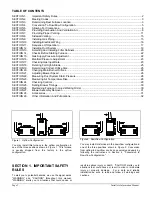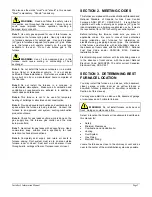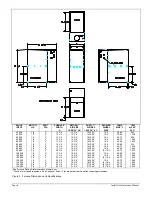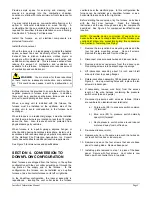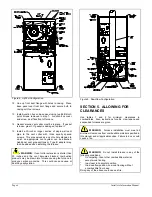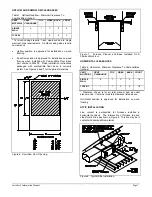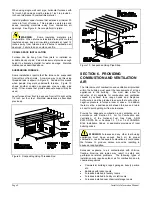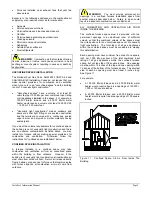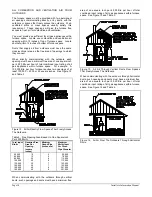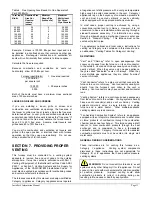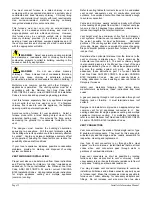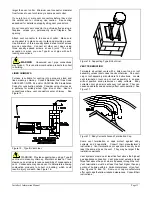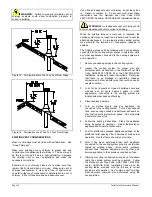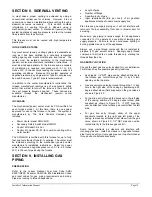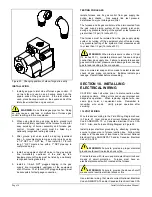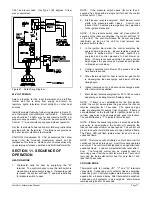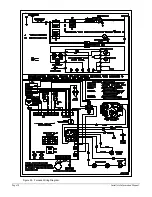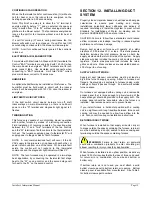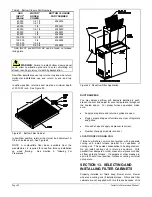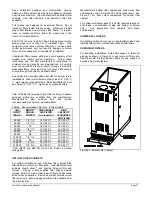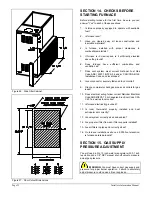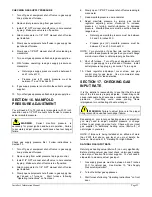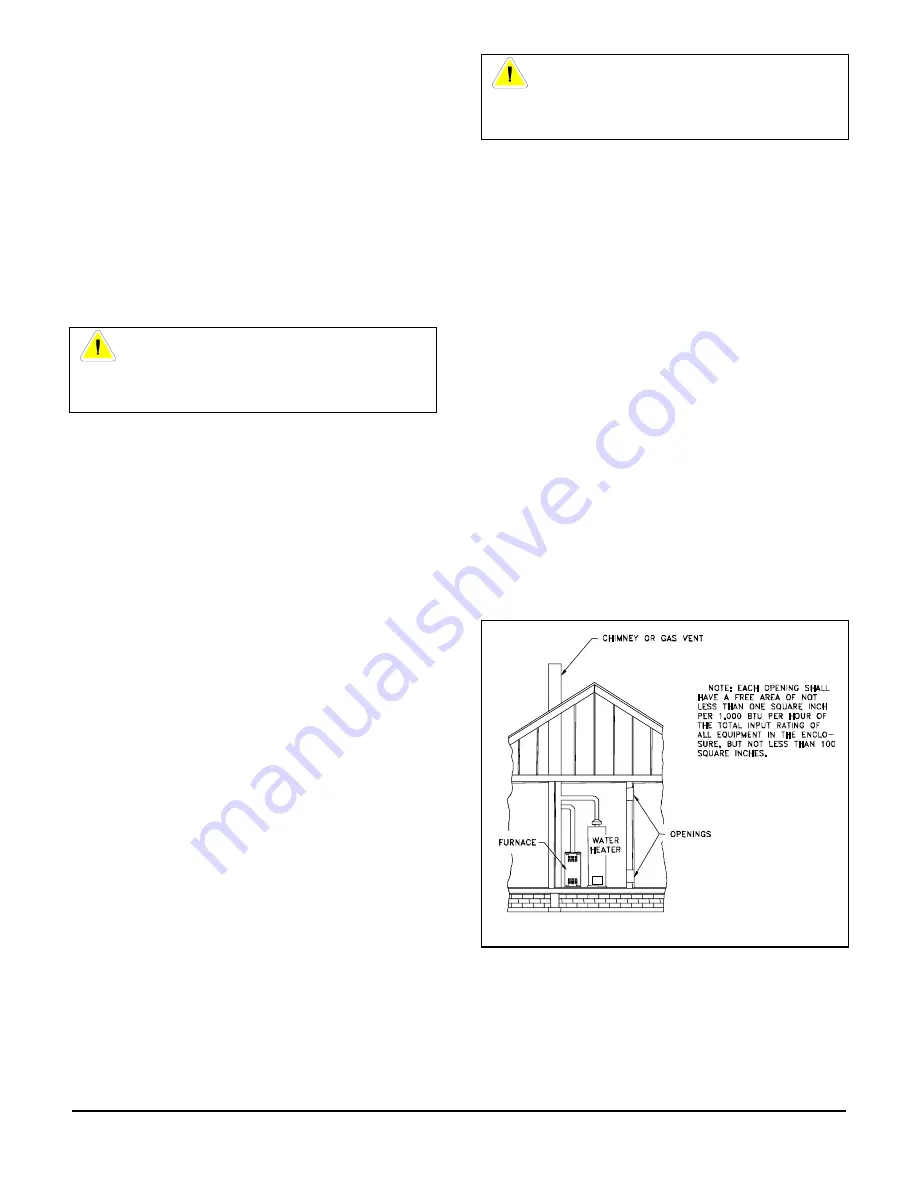
Installer’s Information Manual
Page 9
•
Furnaces installed near exhaust fans that vent the
above areas
Exposure to the following substances in the combustion air
supply may also require outdoor air for combustion:
•
Aerosols
•
Permanent
wave
solutions
•
Chlorinated waxes, bleaches and cleaners
•
Cat
litter
•
Chlorine-based swimming pool chemicals
•
Cleaning
solvents
•
Paint removers and varnishes
•
Adhesives
•
Antistatic fabric softeners
•
Most
refrigerants
WARNING
: Combustion air that contains chlorine,
fluorine, bromine or iodine could cause corrosion in heat
exchanger or vent system, resulting in nausea or death by
asphyxiation.
UNCONFINED SPACE INSTALLATION
The National Fuel Gas Code, ANSI Z223.1/NFPA 54 and
CAN/CGA B149 Installation Codes do not require that you
make special provisions for combustion and ventilation
when furnace is in an "unconfined space" and the building
is not of "unusually tight construction."
•
"Unconfined spaces" have a volume of at least 50
cubic feet per 1000 Btu per hour combined input rating
of all appliances installed in the space. For example: a
100,000 Btu/hr furnace and a 40,000 Btu/hr water
heater would require a volume of at least 140,000 X 50
÷ 1,000 or 7,000 cubic feet.
•
"Unusually tight construction" means windows and
doors are either tight fitting or are sealed construction
and that walls are covered with a continuous, sealed
vapor barrier and drywall or similar materials having
sealed joints.
If you meet the volume requirements for unconfined space,
the building is not of unusually tight construction and there
are no airborne contaminants, as listed above, you may
install this furnace without making special provisions for
combustion and ventilation. Otherwise, follow the
instructions for "confined space installation" below.
CONFINED SPACE INSTALLATION
A furnace installed in a confined space may take
combustion and ventilation air from an unconfined space
within the building or from outdoors. However, if the
building is of unusually tight construction all combustion air
must come from outdoors. Also, if return air is taken directly
from a hallway or space next to furnace that communicates
with furnace spaces, all combustion air must come from
outdoors.
WARNING
: You must provide permanent air
openings to a confined furnace installation space from
another area as described below. Failure to do so could
result in inadequate combustion and ventilation air.
ALL COMBUSTION AND VENTILATION AIR FROM
INSIDE THE BUILDING
The confined furnace space must be provided with two
permanent openings to an additional room of sufficient
volume so that the combined volume of the spaces meet
the criteria above for an unconfined space not of unusually
tight construction. The total input of all gas appliances
within the combined space must be considered in making
this determination.
Each opening must have minimum free area of one square
inch per 1,000 Btu per hour of the total combined input
rating of all gas appliances within the confined furnace
space, but not less than 100 square inches. One opening
must be within 12 inches of the top and one opening within
12 inches of the bottom of the furnace space. The shortest
side of each air opening must be at least 3 inches long.
See Figure 11.
For example:
•
A 100,000 Btu/hr furnace and a 40,000 Btu/hr water
heater would require free area openings of 140,000 ÷
1,000 or 140 square inches.
•
A 40,000 Btu/hr furnace and a 40,000 Btu/hr water
heater would require free area openings of 100 square
inches.
Figure 11. Confined Space, All Air From Inside The
Building.


